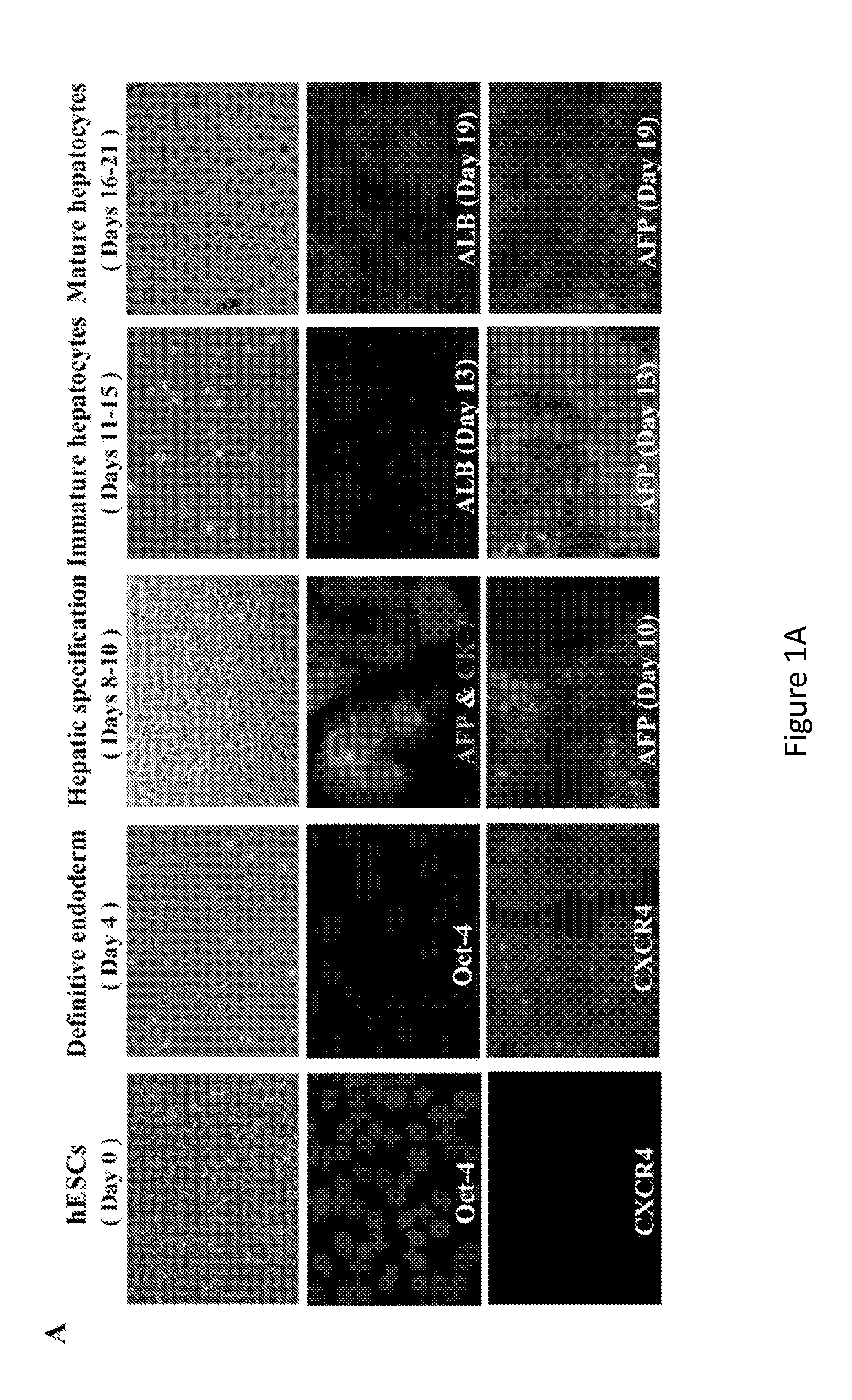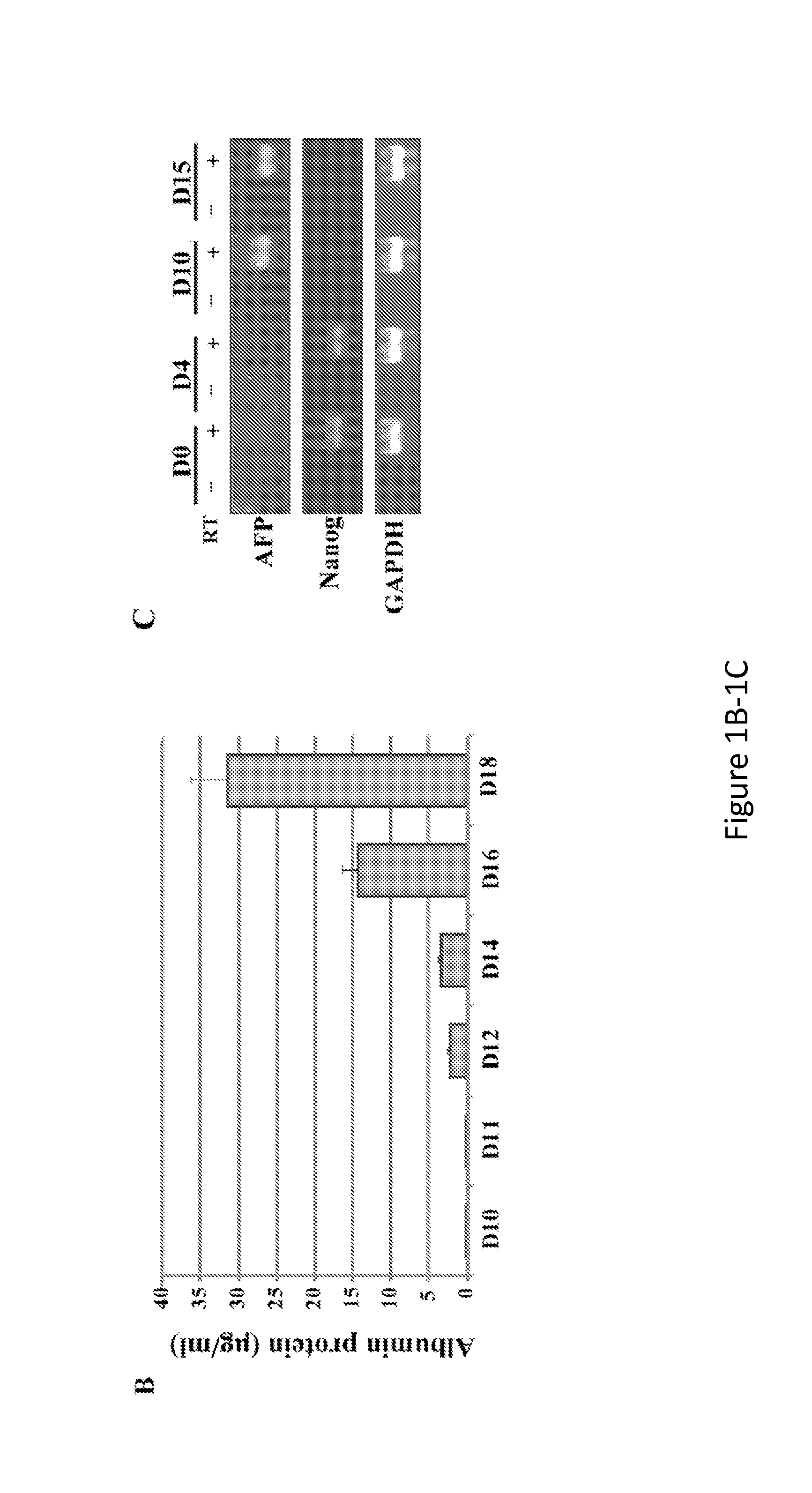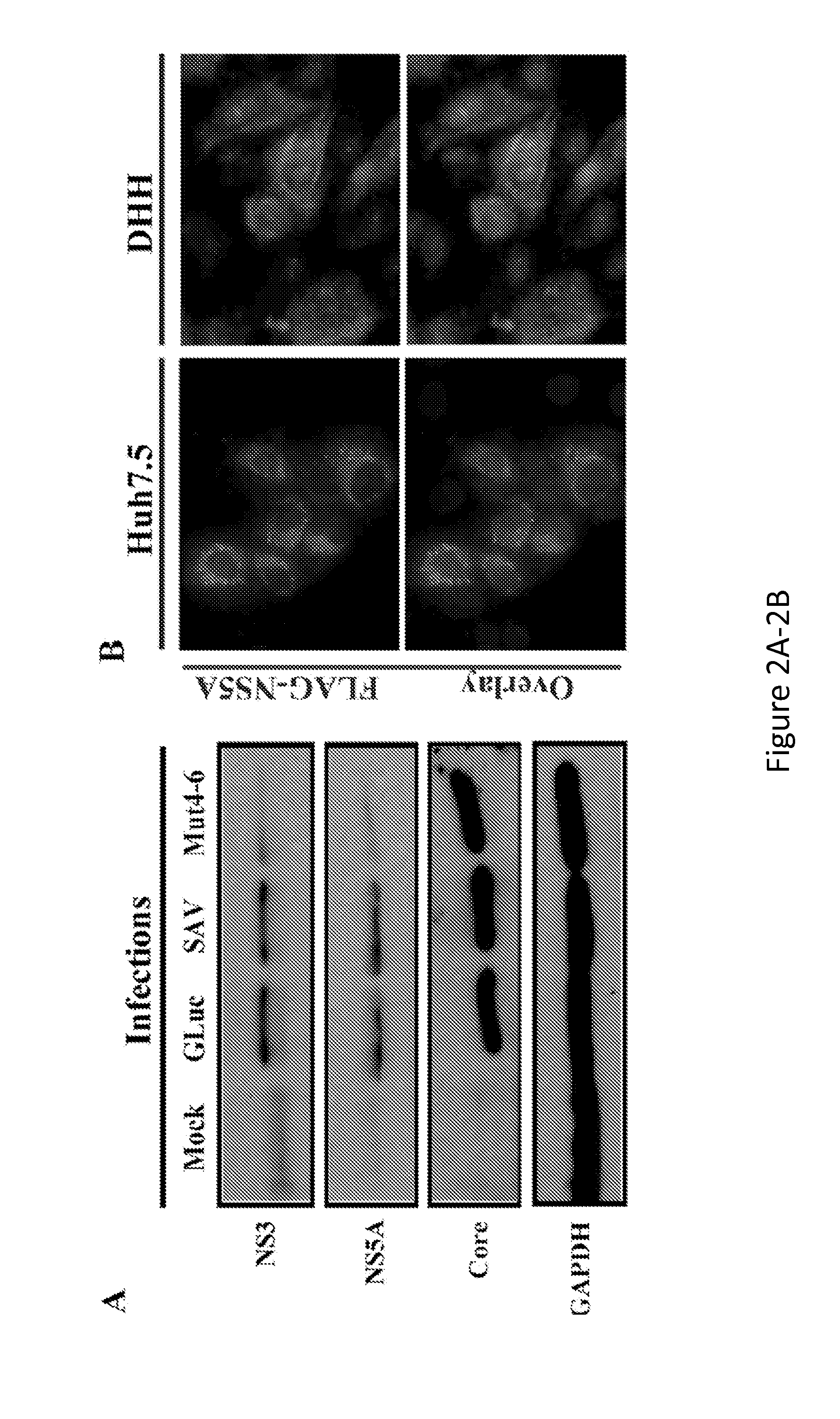Hepatitis Virus Culture Systems Using Stem Cell-Derived Human Hepatocyte-Like Cells and Their Methods of Use
a technology of stem cell-derived human hepatocytes and culture systems, which is applied in the field of hepatitis virus culture systems using stem cell-derived human hepatocyte-like cells, can solve the problems of requiring liver transplantation, destroying the self-generating ability of the organ, and facing the serious problem of re-infection of the new gra
- Summary
- Abstract
- Description
- Claims
- Application Information
AI Technical Summary
Benefits of technology
Problems solved by technology
Method used
Image
Examples
experimental examples
[0198]The invention is further described in detail by reference to the following experimental examples. These examples are provided for purposes of illustration only, and are not intended to be limiting unless otherwise specified. Thus, the invention should in no way be construed as being limited to the following examples, but rather, should be construed to encompass any and all variations which become evident as a result of the teaching provided herein.
[0199]Without further description, it is believed that one of ordinary skill in the art can, using the preceding description and the following illustrative examples, make and utilize the compounds of the present invention and practice the claimed methods. The following working examples therefore, specifically point out the preferred embodiments of the present invention, and are not to be construed as limiting in any way the remainder of the disclosure.
example 1
Productive Infection of Stem Cell-Derived Human Hepatocytes by Hepatitis C Virus Reveal Host Determinants of Viral Permissiveness
[0200]The data described herein demonstrate that hepatic cells derived by directed differentiation of stem cells, including iPSCs, can support HCV infection. Complete life cycles of HCV infection were completed starting with HCV entry and ending with secretion of infectious viral particles into culture media. Infection of DHHs was sensitive to replication inhibitors as well as entry blockers. Four different variants of JFH-1, including a J6 / JFH hybrid (GLuc), were used to produce HCVcc used in the studies described herein. Both wt sequence (JFH-FLAG) and adaptive mutants (SAV and Mut4-6) were able to replicate in DHHs, indicating that the ability for DHHs to support HCV infection was not dependent on particular isoforms or mutations. In addition, infection with a genotype 1b clinical isolate was also achieved, demonstrating the feasibility of using DHHs to...
example 2
Infection of Stem Cell-Derived Human Hepatocytes by Hepatitis B Virus
[0228]Infection of the DHHs was performed at day 10, 11, 12, 13, 14, 15, 16, 17, and 18 of the DHH differentiation protocol. Infection was conducted in the presence or in the absence of 4% PEG-6000 and 2% DMSO for 16 hours. In some experiments where infection was performed at day 10, 11, 12, 13, and 14, a second round infection at 48 hours after the first infection is also conducted. The culture supernatants were collected every 2 days and cell lysates were collected at day 21. All the supernatant and lysate samples were subjected to ELISA and western blotting to detect of HBV core antigen.
[0229]Two types of HBV particle preparation are used for the DHH infection experiments. First, HBV particles were produced in cell culture with a titer of 3e10 / ml. Using the first preparation, the infection was conducted using a multiplicity of infection (M.O.I) of at least 100. Second, HBV particles were obtained from a serum sa...
PUM
| Property | Measurement | Unit |
|---|---|---|
| time | aaaaa | aaaaa |
| Tm | aaaaa | aaaaa |
| Tm | aaaaa | aaaaa |
Abstract
Description
Claims
Application Information
 Login to View More
Login to View More - R&D
- Intellectual Property
- Life Sciences
- Materials
- Tech Scout
- Unparalleled Data Quality
- Higher Quality Content
- 60% Fewer Hallucinations
Browse by: Latest US Patents, China's latest patents, Technical Efficacy Thesaurus, Application Domain, Technology Topic, Popular Technical Reports.
© 2025 PatSnap. All rights reserved.Legal|Privacy policy|Modern Slavery Act Transparency Statement|Sitemap|About US| Contact US: help@patsnap.com



